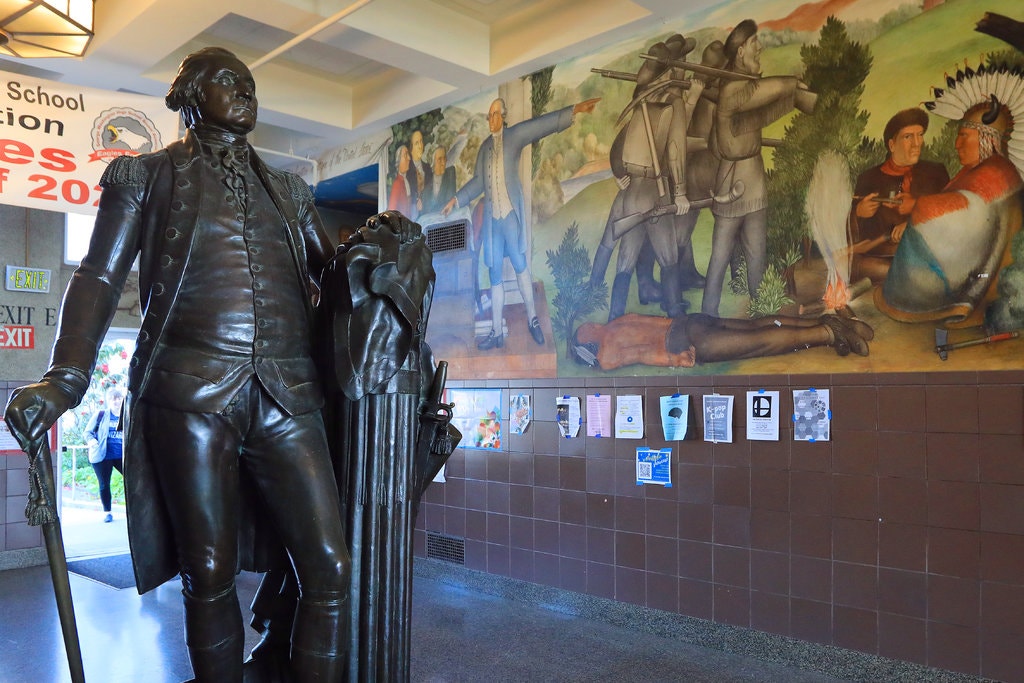
Twenty seven years ago, Barbara Carrasco was commissioned by the city of Los Angeles to create a mural for the city’s bicentennial celebration in 1981. She wanted create a work that really spoke from her heart, so drawing on her perspective as a Mexican-American woman, she set to work on the 43-panel mural that would be put on display in downtown Los Angeles, and planned to include scenes that illustrated the plight and successes of Mexican-Americans as well as many other minority populations.
On her mural, Carrasco included many aspects of Los Angeles history such as the building of the missions and the orange groves; however she also includes some heavier glimpses into LA history, such as an image of a Japanese internment camp that thousands of Japanese Americans were sent to during World War II, and a portrait of Biddy Mason, who was a freed slave living in LA in the eighteen hundreds.
Now what could possibly be the problem with including such a wide variety of Los Angeles history on the mural? The City of Los Angeles felt like some of the themes expressed in the mural were too heavy and negative to put on display, and when Carrasco refused to paint over them, they decided to cancel the mural project. This blatant censorship was a shocking disappointment for Carrasco, who had poured her heart and soul into this giant mural.
Art is supposed to invoke emotions and garner a response. While it is agreeable that a lot of the history in unpleasant, hiding from the truth promotes a community of ignorance. Society is meant to be progressive, and the only way to keep moving forward is to remember the mistakes we have made in the past. The public should not have to be protected from this, and the city should not have tried to silence Carrasco as she attempted to embrace and bring to light the plight minority groups in Los Angeles, and all over the country, have faced.
It is amazing that it took twenty seven years for the City of Los Angeles to rectify their mistake. The mural sat in storage (at Carrasco’s expense) for all of these years and is just now being installed in Union Station as of this weekend. The right to free speech has been met with lots of controversy especially over the last few years, in some instances for understandable reasons. But in this case, there were no harmful intentions on the part of the artist. While it is fortunate that the City of Los Angeles was able to come around and give the mural the recognition it deserves, the controversy speaks volumes about the struggle to preserve free speech and the ability to be self-reflective in order to make progress.







